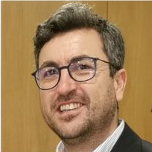Advanced Bioscaffolds as Drivers of Modern Medicine
A special issue of International Journal of Molecular Sciences (ISSN 1422-0067). This special issue belongs to the section "Materials Science".
Deadline for manuscript submissions: closed (31 December 2021) | Viewed by 34783
Special Issue Editors
Interests: MSC, GRP and EV transplantation; stroke; ALS; neuroinflammation; biomaterials
Interests: image-guided drug delivery to the brain; biomaterials; MRI; stroke; brain tumors
Interests: nanobiomaterials; nanomedicine; theranostics; tissue engineering; bio 3D printing; 3D in vitro tissue models of disease
Special Issues, Collections and Topics in MDPI journals
Special Issue Information
Dear Colleagues,
The traditional dichotomy of surgery and small molecule-based therapeutics gradually blurs with the arrival of increasingly sophisticated healthcare solutions, which are becoming a determinant of modern medicine. A variety of active pharmaceutical and biological ingredients span across proteins, lipids, nucleic acids, nanoparticles and even living cellular products. Notably, traditional systemic routes of their delivery reach limits. Bioscaffolds are becoming an increasingly attractive option for minimally invasive and spatially targeted delivery of increasingly complex therapeutic solutions. The local nature of bioscaffold-based routes may also minimize whole-body side effects plaguing traditional, systemic routes of drug delivery. Therefore, there is a momentum for advancing bioscaffold research.
For this Issue, we are inviting scientists focused on bioscaffold research to present the progress in the regions of their interests. One compelling frontier in this field is bioscaffold labeling for non-invasive imaging. The efforts toward mimicking the extracellular matrix by the introduction of bio-inspired scaffolds are also very tempting. The use of bioscaffolds as prolonged drug delivery systems will also be welcome. Ultimately, we envision to feature in our Issue smart bioscaffolds with a remote and precisely controlled drug release and tuning. In summary, we expect to collect a series of articles on cutting-edge bioscaffold research.
Prof. Dr. Barbara Lukomska
Prof. Dr. Piotr Walczak
Prof. Dr. Joaquim Miguel Oliveira
Guest Editors
Manuscript Submission Information
Manuscripts should be submitted online at www.mdpi.com by registering and logging in to this website. Once you are registered, click here to go to the submission form. Manuscripts can be submitted until the deadline. All submissions that pass pre-check are peer-reviewed. Accepted papers will be published continuously in the journal (as soon as accepted) and will be listed together on the special issue website. Research articles, review articles as well as short communications are invited. For planned papers, a title and short abstract (about 100 words) can be sent to the Editorial Office for announcement on this website.
Submitted manuscripts should not have been published previously, nor be under consideration for publication elsewhere (except conference proceedings papers). All manuscripts are thoroughly refereed through a single-blind peer-review process. A guide for authors and other relevant information for submission of manuscripts is available on the Instructions for Authors page. International Journal of Molecular Sciences is an international peer-reviewed open access semimonthly journal published by MDPI.
Please visit the Instructions for Authors page before submitting a manuscript. There is an Article Processing Charge (APC) for publication in this open access journal. For details about the APC please see here. Submitted papers should be well formatted and use good English. Authors may use MDPI's English editing service prior to publication or during author revisions.
Keywords
- bioscaffolds
- imaging
- drug carriers, targeted therapy
- hydrogel
- precision medicine








